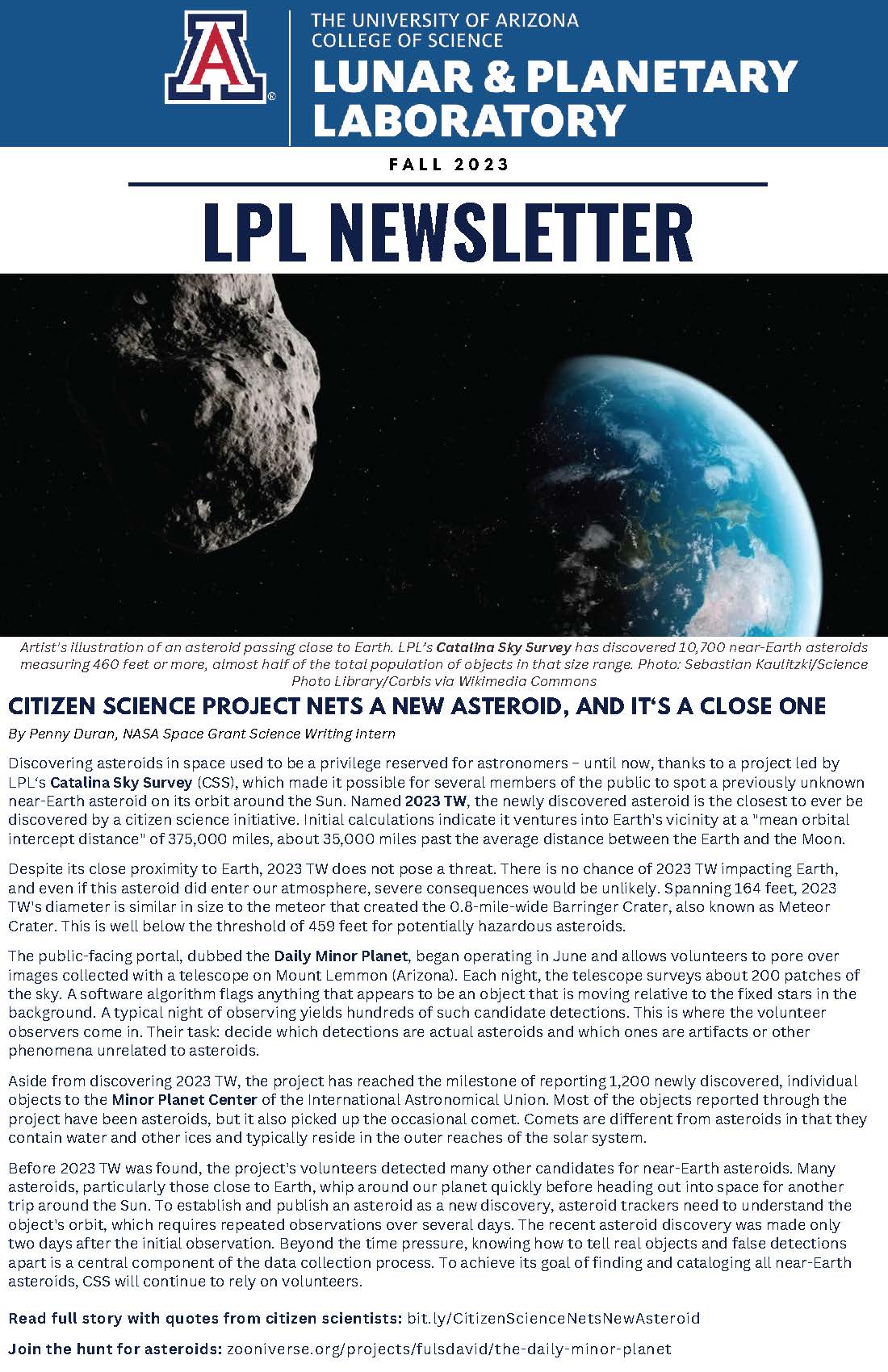Sweating The Small Stuff: UArizona Scientists Have Begun To Study Samples From Asteroid Bennu
At UArizona's Kuiper-Arizona Laboratory for Astromaterials Analysis, researchers have begun studying particles brought to Earth by the OSIRIS-REx mission. A suite of instruments ranging from optical to electron microscopes allows the team to probe the sample down to the atomic scale.
Lily Robinthal
PTYS/LPL Graduate Students
Lily Robinthal (she/her)
PTYS Graduate Student

Kuiper 326
Astrobiology, Exoplanets, Planetary Astronomy, Planetary Atmospheres
NSF Graduate Research Fellow
Last updated:
Jingyu Wang
PTYS/LPL Graduate Students
Jingyu Wang
PTYS Graduate Student

Kuiper 322
Astrobiology, Exoplanets, Planetary Astronomy, Planetary Atmospheres
Last updated:
Ruby Fulford
PTYS/LPL Graduate Students
Ruby Fulford (She/Her)
PTYS Graduate Student

Kuiper 201
Astrobiology, Planetary Geophysics, Planetary Surfaces, Small Bodies, Titan & Outer Solar System
Current Spacecraft Involvement
OSIRIS-RExLast updated:
Zarah Brown
PTYS/LPL Postdocs
Zarah Brown (she/her)
Postdoctoral Research Associate

Kuiper 239
Planetary Atmospheres, Planetary Formation and Evolution
Advisor(s): Tyler Robinson
- Scale-model at U of A Turns Stroll Across Campus into Epic Space Journey - September 9, 2023
- What Makes Saturn's Upper Atmosphere So Hot - April 6, 2020
| Attachment | Size |
|---|---|
| CV 2022_Aug_24.pdf | 176.13 KB |
Last updated:
Pagination
- First page
- …
- 28
- 29
- 30
- …
- Last page



